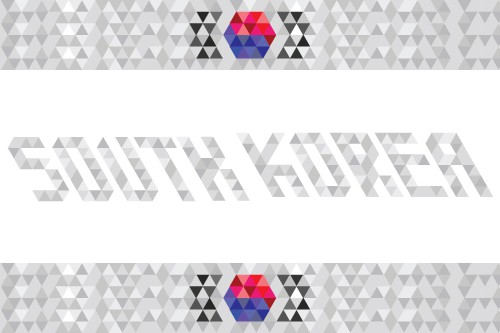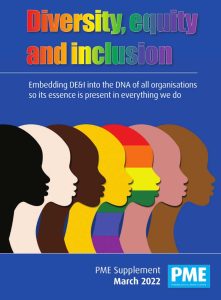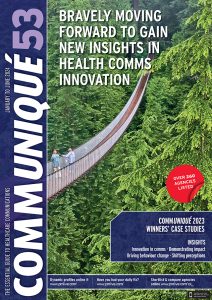
Executive summary
- Currently, South Korea is the leader in global biosimilars development by number trials and drugs in pipeline
- The South Korean government’s strong support is one of the main drivers of the rise in biosimilar development
- Global austerity has also affected the end markets for Korean biopharmaceutical manufacturers, but this could act as a natural selector for the best players, who will emerge as real threats in the market
- Equipped with extensive experience in mAb biosimilar development, South Korean biopharmas are now turning their focus towards biobetter development.
The South Korean government plays an important role in shaping the domestic biopharmaceutical industry. In November 2010, the Ministry of Knowledge & Economy announced unprecedented capital and regulatory support to boost the industry, setting an ambitious target for Korean pharmaceuticals to capture 22 per cent of the global biosimilars market share by 2020 (Ministry of Knowledge & Economy, November 18, 2010).
Previously, the Korean government has focused on the IT industry – deeming it as the only growth area in Korea. However, now the government is proactively seeking out and preparing for a next-generation industry: biosimilars, one financial analyst said.
Recently, this effort bore fruit when a Remicade (Johnson & Johnson) biosimilar, which had been developed by Celltrion Inc, a South Korean biopharmaceutical company, became the world’s first monoclonal antibody (mAb) to be developed following a strict set of guidelines set out by the Korean and, more importantly, leading global regulatory agencies of the mature markets such as Europe.
Celltrion received approval by the Korean Food & Drug Administration (KFDA) for Remsima in July 2012 and also filed for approval in the EU and other countries in the same year. If successful in launching its product outside Korea, Celltrion will be one of the first Korean biopharmaceuticals to export mAbs to international markets, signalling a new wave of Korean entrants on to the global biologics landscape.
Biosimilars development in South Korea
The South Korean government’s investment in current biosimilars development reached around 35 per cent of total R&D costs in 2012, while its investment in chemical drug development accounted for just 12 per cent. The investment followed a move in March 2011 by the KFDA, which began a tailored consulting programme to help biopharmaceutical companies to understand the regulatory process for biosimilars.
The national government has also embarked on a project codenamed Columbus in early 2011 to facilitate the entry of South Korean healthcare technology companies into the US. To date, 21 domestic biopharma companies have participated in this project, whereby the government shares the burden of high-risk investment such as the construction of cGMP facilities and provides consulting services on FDA approval guidelines and marketing strategies.
As of December 2012, there are 12 approved biosimilars in the domestic South Korean market. These are mainly the first generation protein therapeutics, such as Leucostim (Dong-A’s Filgrastim biosimilar), Epokine (CJ Pharma’s erythropoietin), and Euvax B (LG Life Sciences’ HBsAg). Remsima was recently added to the list. Looking forward, there are likely to be further biosimilar products seeking approval as there are over 36 biosimilar assets in the Korean pipeline, of which more than 47 per cent are mAbs.
This concerted effort for mAb development seems to have gained considerable attention from the national government largely based on its high potential to be marketed globally. Table 1 shows the mAb biosimilar pipelines and approved products in South Korea.
The nine domestic players listed in Table 1 are well equipped with in-house global expertise, highlighted by cGMP facilities and/or previous contract manufacturing experience for global pharmaceutical companies. Most of these domestic firms are seeking strategic development or commercialisation partnership opportunities in order to enter new markets.
| Table 1. Current development and marketing of mAb biosimilars in Korea | ||||||
| Original drug (INN) | Biosimilar pipeline / product | Developer | Partnership with: | Indication* | Location | Status |
| Herceptin (trastuzumab) | CT-P6 | Celltrion | Hospira, Nippon Kayaku | Breast cancer | Global | Phase III completed in Dec 2011 |
| Japan | Preclinical as of Sep 2012 | |||||
| S Korea | Phase I as of Dec 2012 | |||||
| Japan | Phase I planned as of Dec 2012 | |||||
| S Korea | Preclinical as of Dec 2012 | |||||
| Remicade (Infliximab) | Remsima | Celltrion | Hospira, Nippon Kayaku | RA, AS, CD, PA, PS, & UC | S Korea | Marketed in Sep 2012 |
| Global | Filed for approval in 2012 | |||||
| GS071 | Schnell Biopharma | Nichi-Iko & Sanofi Aventis | RA | S Korea & Japan | Phase III planned as of Dec 2012 | |
| S Korea | Preclinical as of Dec 2012 | |||||
| Rituxan/Mabthera (Rituximab) | SAIT101 | Samsung Bioepis | Biogen Idec | NHL | S Korea | Phase I started in Mar 2011 |
| RA | Global | Phase I/III stopped in Oct 2012 | ||||
| CT-P10 | Celltrion | – | NHL | Global | Phase III started in Dec 2011 | |
| AP052 | Schnell Biopharma | Nichi-Iko | NHL | S Korea & Japan | Phase I planned in Dec 2012 | |
| MG1106 | Green Cross | – | NHL | S Korea | Preclinical as of Dec 2012 | |
| Humira (Adalimumab) | unknown | Dong-A Pharma | Meiji Seika Pharma | RA | S Korea | Preclinical as of Dec 2012 |
| LBAL | LG Life Sciences | – | S Korea | Preclinical as of Dec 2012 | ||
| Enbrel** (Etanercept) | HD203 | Hanwha Chemical | Merck*** | S Korea | Filed with KFDA in Sep 2012 | |
| LBEC0101 | LG Life Sciences | Mochida Pharma | S Korea | Phase I started in Nov 2012 | ||
| DWP422 | Daewoong | – | S Korea | Phase I planned as of Dec 2012 | ||
| CT-P5 | Celltrion | – | S Korea | Preclinical as of Dec 2012 | ||
| ReoPro (Abciximab) | Clotinab**** | Isu Abxis | – | Adjunct to PCI | S Korea | Marketed in Dec 2006 |
| Emerging area | Marketed in 2007 | |||||
| *RA = rheumatoid arthritis; AS = ankylosing spondylitis; CD = Crohn’s disease; PA = psoriatic arthritis; PS = psoriasis; UC = ulcerative colitis; NHL = non-Hodgkin lymphoma; PCI = percutaneous coronary intervention **Etanercept is a fusion protein, not mAb ***According to Hanwha, Merck terminated the deal for development and marketing of HD203 in December 2012 ****Clotinab is not considered as a biosimilar according to the KFDA biosimilars guidelines due to its rare indication (comparable data is insufficient) and the fact that it had been approved before the guidance was established. Some sources still acknowledge Clotinab as the world-first mAb biosimilar, which is, strictly speaking, not true because abciximab is an antibody fragment rather than a full mAb | ||||||
Austerity survivors will become global threats
The majority of mAb biosimilars are being developed in Asia (44 per cent) and Europe (36 per cent), South Korea being the global leader with 17 mAb portfolio products from nine different biopharma companies. However, not all South Korean developers are financially prepared to conduct global trials and they possess relatively little overseas commercial know-how or presence. The top location for biosimilar trials in 2012 was South Korea. This suggests that most Korean biopharma companies focus their trials domestically, instead of conducting trials in multiple global regions. This is because only larger entities like Samsung Bioepis and Hanwha Chemical have sufficient resources to absorb the financial risks of failed trials. Smaller entities such as Isu Abxis are listed companies whose stock prices and financial stability are especially vulnerable to trial failures.
“Since the drug price cuts and the EMP (equal maximum price) took effect in April [2012], domestic pharmaceuticals are giving up their footing to global MNCs,” a key opinion leader in biopharma industry in Korea is quoted as saying.
Moreover, the South Korean government’s recent austerity measures in response to global economic slowdown could further polarise domestic firms. The government slashed the reimbursement prices of 6,500 drugs by an average of 14 per cent in April 2012. Additionally, the government enacted the Dual Punishment Legislation to prohibit illegal rebate giving–taking, mandating that both rebate providers and receivers are to be punished by law. This decreased profit margins of domestic pharma manufacturers by an average of 3.4 per cent.
Larger firms are expected to be able to better withstand these industry-wide challenges and grow in market share at the expense of smaller firms that have lower competing powers.
Smaller firms with good assets are likely to be acquired by larger entities. Consequently, these surviving domestic firms will further enhance their already larger biosimilars pipelines, and are likely to emerge as leaders in the global biosimilar markets with improved technology and established knowhow in biosimilar development.
From biosimilars to biobetters
Many of the South Korean mAb biosimilar developers now turn their interests to biobetter development (Table 2). Experience in mAb development has proven helpful in driving biobetter research and development. For example, Celltrion recently announced that it had filed for patent approval of its breast cancer portfolio product, CT-P26. This is an antibody drug conjugate (ADC) comprising trastuzumab and dolastatin-10. It was noteworthy that the Celltrion’s announcement happened to coincide with Roche’s clinical data presentation of its Herceptin biobetter, Trastuzumab-emtansine (T-DM1).
| Table 2. Selected biobetter development in South Korea | ||||||
| Class | Biobetter pipeline | Developer / collaborator | Description | Targeting indication | Location | Status |
| Monoclonal Antibody | MGAH22 | Green Cross / MacroGenics | Fc-optimised Her2 mAb with affinity similar to trastuzumab | Breast cancer | S Korea & US | Phase I started in Aug 2010 |
| CT-P26 | Celltrion | Trastuzumab-dolastatin 10 antibody drug conjugate | S Korea | Patent filed in Oct 2012 | ||
| VM-505 | Reyon Pharma / ViroMed | Fc-optimised HER2 mAb | S Korea | Preclinical as of Dec 2012 | ||
| Protein therapeutics | GCPGC | Green Cross | Pegylated G-CSF | Neutropenia | S Korea | Phase III started in Oct 2010 |
| EPO-Fc | EPO-hybrid Fc | Anaemia | S Korea | Phase I | ||
| Hanferon (HL143) | HanAll Biopharma | Long lasting IFN- | Hepatitis C | US | Phase II planned as of Dec 2012 | |
| HL144 | IFN- | Multiple sclerosis | US | Patent granted in July 2011 | ||
| HL032 | Oral hGH | Hormone deficiency | S Korea | Phase I Completed Dec 2011 | ||
| HL033 | Improved EPO | Anaemia | US | Patent granted in Dec 2011 | ||
| HL036 | Topical TNF- inhibitor, fragment of Etanercept | Uveitis, dry eyes, AMD | S Korea | Preclinical as of July 2011 | ||
Some companies already have their biobetter pipelines in clinical trial stage. MGAH22, jointly developed by South Korean firm Green Cross and the US-based MacroGenics, is being tested for HER2 positive breast cancer patients in phase I trials in South Korea and the US. Another notable company is HanAll biopharma which currently has five biobetter portfolio products, all of which have patents registered in the US.
Considerations for big pharma
South Korean biopharmaceutical companies are entering the international biologics landscape as serious contenders for global market share through direct competition and licensing partnerships with more established players in the West.
On top of the current reimbursement pressures in developed markets such as the EU driving generics and biosimilar uptake, the need for affordable medicines in ‘pharmerging’ countries also represents huge opportunities in these new markets.
In addition, the manufacturing, clinical and regulatory capabilities within South Korea are growing, and the ever-increasing number of biobetters under development in the region signals a paradigm shift away from imitation towards innovation, making these manufacturers new forces to be reckoned with. Going into the next growth cycle, it is critical that the competitive strategies of global pharmaceutical companies take into consideration the capabilities and experience of these emerging South Korean players in developing assets that do not only match, but potentially surpass, existing biologics.





